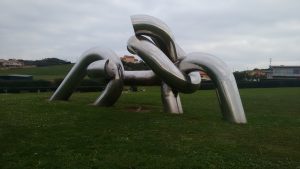Lesson 4 (2) Intellectual Property.
UNDER CONSTRUCTION
(Compulsory readings. Supplement to classroom notes and course materials)
I Introduction
Intellectual Property is intangible property resulting from creations. Its owners and holders have specific rights, as established by the Law. Please note the differences:
- (Propiedad Industrial) industrial property, ie: patents on inventions, designs and models, protected designations of origin; new varieties of vegetal, etc
- (Signs), trademarks, registered trademarks, service brands etc
- (Propiedad intellectual) copyright and related rights, ie: music, literature, paintings, sculptures.
- Commercial strategies and other immaterial property rights: trade secrets, know-how, confidentiality agreements, or rapid production.
Intellectual Property rights (IPRs) allow titleholders (inventors, creators, artists, or other rightsholders) – to decide how, when and where their creations are used and/or exploited. Such rights have a negative and a positive manifestation
IP protection varies from one IP right to another. In very general terms we say that:
- patents allow the holder to stop third parties from making, using or selling the holder’s invention for a certain period (maximum of years (20)
- trademarks protect the «hallmark» (signo distintivo) of protected product/service by preventing other business from the offering, etc services/products under the same hallmark
- copyright / neighbouring rights.
- moral or paternity contents
- economic content,
- Other IP
- Classroom notes
- Please note: licence / cession

